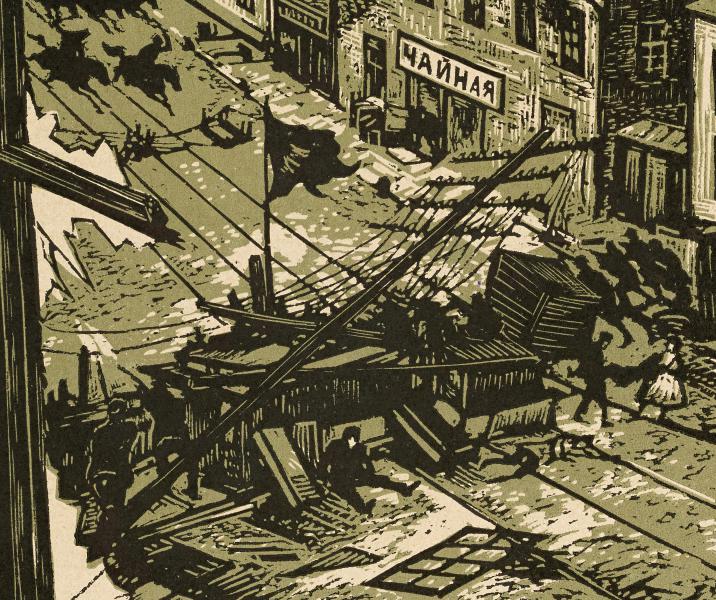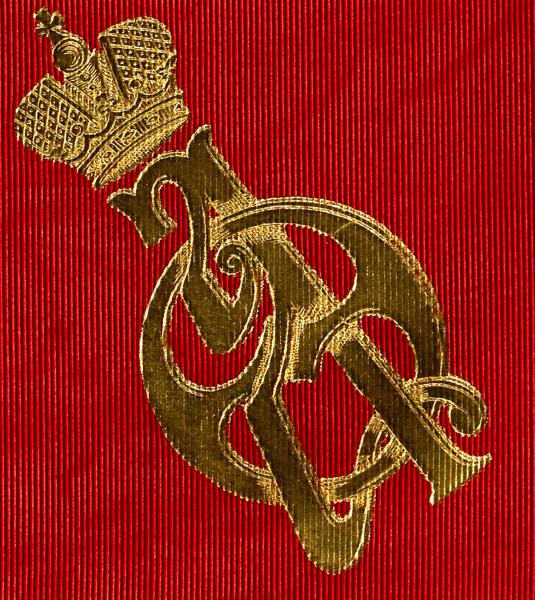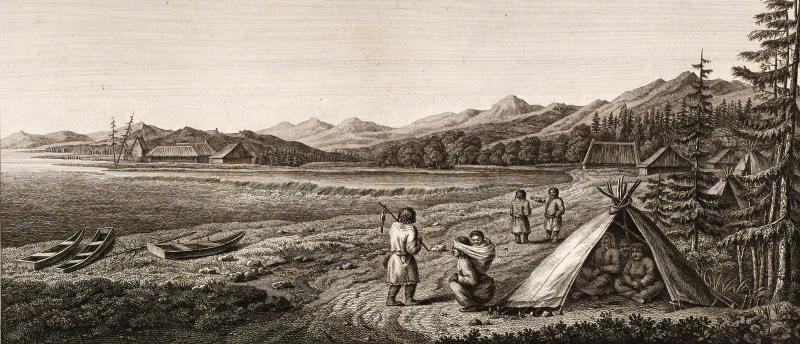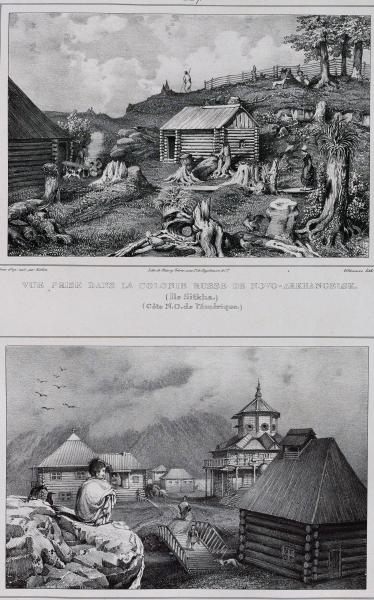Opening the Vaults: Art Folios & Resources of the Hoover Institution Library (Text)
by Michael Herrick, Hoover Institution
The Hoover Institution on Stanford University’s campus is in the midst of commemorating multiple centenaries. Founded in 1919 at Stanford as the Hoover War Library, a repository for primary sources from the Great War, its exhibit pavilion currently hosts Weapon on the Wall: American Posters of World War I. The Hoover Institution today focuses on U.S. policies and its current engagement with the world, but the Library & Archives continue to collect, preserve and provide access to sources related to both past and current wars, revolutions and their effects on societies and individuals. The Russian Revolution and its aftermath (see, for instance, Image 1) sparked an immense amount of collecting activity which is still being processed, arranged, described, and digitized one hundred years later.
In preparation for the upcoming 100th anniversary of the Bolshevik revolution, the Hoover Library & Archives made a concerted effort to assess its holdings of visual materials produced in that era. This process included recent careful description of the library’s art vault, the core component of which is made up of what is called the Russian Art Collection. The Hoover Tower’s upper two vaults contain predominately books and pamphlets about the revolution and civil war, as well as other rarities aligning with the collecting scope of the archives. However, the art vault has also attracted materials that neither fit with the Bolshevik image of Russia nor fall easily within the normal collecting scope of the Hoover War Library, not least of all because, over the past century, the Hoover Institution has also acquired a significant number of paintings and other artwork received as donations or contained within larger accessions to the archives. The library’s art vault, however, is confined to items which in some manner can be classified as books. They are often large folios of original prints. Hilja Kukk’s decades-old description of the Russian Art Collection at the Hoover Institution, published for the first time recently in Slavic and East European Information Resources (vol. 17, no. 3), outlines the basic contours of that collection. Today, one can enter “Russian Art Collection” into Stanford’s catalog and browse full descriptions. But the Hoover Library’s art vault also contains a range of materials that do not fit within the Russian Art Collection per se. A few factors unify this seemingly disparate assemblage of Russia-related books.
First, the Russian Art Collection at Hoover implies aesthetics and themes largely out of fashion by the early Soviet period. The core of this main art vault collection was acquired in Moscow and Petrograd in the early 1920s and represents some of the immediate discards of revolution. Second, the art vault holds publications whose significance lies as much in how they were made as in the information, whether textual or visual, that they contain. A book on Arabian horses from one of the Hoover Institution’s ancillary microcollections of Romanov Family-provenance books illustrates these first two points well. Even though a Hoover War Library collector likely did not acquire this book personally in Petrograd in the early 1920s, it exited Russia as part of the same process of expelling, selling, and destroying the old. The monogram of Russia’s last empress, Aleksandra Feodorovna (Image 2), appears in a sumptuous binding and pairs with the monogram of her husband in a matching binding for this title currently preserved at the Library of Congress. Large rare book collections acquired throughout the twentieth century, and to this day, fall into this category of pre-revolutionary book art disgorged from the former Russian empire in the decade after the revolution. The book collections of Nicolas de Basily (1883-1963), of the Sidamon-Eristoff private library, and of David and Eugenie Chavchavadze, which contain a large number of titles from a collection which Princess Kseniia (1903–1965), daughter of Grand Duke Georgii Mikhailovich (1863–1919), assembled outside the Soviet Union, all complement the core Russian Art Collection created by Herbert Hoover’s curators in the 1920s. Finally, most of what has congregated in the Hoover Library’s art vault settles uncomfortably into standard twentieth-century library collections. They are usually large or loose folios so they fail to fit on a shelf in a way which libraries generally deem appropriate and convenient.
The collection on Russian America in the Hoover Library’s art vault embodies all three of these points well. This small collection likely owes its existence to Frank A. Golder’s (1877–1929) work in early Soviet Moscow and Petrograd. While the Hoover Library holds several textual travel accounts and other evidence of nineteenth-century Russian interest in America and American interest in Russia, the most remarkable items document, in images, the nineteenth-century frontier through extra-large folios of prints created in quite limited quantities as the result of Russia’s voyages of discovery. Employing on-board ship’s artists, these voyages were later documented in large folios of engravings. Many of these images have received well-deserved digitization attention already in the “Meeting of Frontiers” project. The artifacts themselves, however, are worthy of attention and study on their own merits. For example, the 1813 Atlas k puteshestviiu vokrug svieta Kapitana Kruzenshterna (Image 3), showing numerous engravings of the coastline of the current Russian side of the frontier, and I. D. Bulychev’s Voyage dans la Sibérie orientale depicting the interior, pair with the lithographs of settlements in what is now Alaska produced as part of F.P. Litke’s voyage (Image 4).
These folios of original prints and many more similar volumes in the Hoover Library & Archive’s Russian Art Collection form the core of a seemingly unintentional jumble of collections relegated originally to the basement of an American archive. Objects like them will be coming out of the vaults for display later this year as part of The Crown Under the Hammer: Russia, Romanovs, Revolution, a joint exhibition at the Hoover Memorial Exhibit Pavilion and the Cantor Arts Center at Stanford University, running October 18, 2017 through early March, 2018.
Michael Herrick is Russian Cataloger & Project Archivist at the Library & Archives of the Hoover Institution.
Editor’s note: To view more images from this collection, or to view the images here in greater detail, click.
Image 1: VKhUTEMAS (Art School). "Barrikada na Presne" from “Revoliutsionnaia Moskva : tret’emu kongressu kommunisticheskogo internatsionala.” [Moskva] : Izdanie Moskovskogo soveta, 1921. [Depiction by a Soviet art student of a Moscow street barricade during the Revolution of 1905]
Image 2: Imperial monogram of Empress Alexandra, Empress consort of Nicholas II stamped in gold on the red silk moiré endpapers of “Kniga ob arabskoi loshadi.” S.-Peterburg : Ekspeditsiia zagotovleniia gosudarstvennykh bumag, 1900. [1 of 2 matching, his and her, Russian imperial presentation copies of a book on Arabian horses]
Image 3: Tilesius von T., W. G. (Wilhelm Gottlieb Tilesius von Tilenau), 1769-1857. "Vid Zaliva Anivy v iuzhnoi chasti Sakhalina", unnumbered print in Atlas k puteshestviiu vokrug svieta Kapitana Kruzenshterna. V Sanktpeterburgie : gravirovano i pechatano pri Morskoi tipografii, 1813. [Ship artist's drawing of a Sakhalin settlement from I.F. Kruzenshtern's round the world voyange, 1803-1806]
Image 4: Kittlitz, F. H. v. (Friedrich Heinrich von), 1799-1874. "Vues prises dans la colonie russe de Novo-Arkhangelsk (Côte N.A. de l'Amérique)", print 7 in Voyage autour du monde, fait par ordre de sa Majesté l'Empereur Nicolas ler, sur la Corvette le Séniavine, dans les années 1826, 1827, 1828 et 1829, sous le Commandement de Frédéric Lütke, Capitaine de la Marine Impériale de Russie, Aide de Camp de Sa Majesté l'Empereur, Commandant de l'Expédition. Partie historique. Atlas lithographié d'après les dessins originaux d'Alexandre Postels, Professeur adjoint de l'Université Impériale de St. Petersburg et du Baron Kittlitz. Paris : Lithographie de Englemann et Compagnie, [1835?] [Ship artist's drawing of a Russian settlement in Sitka, Alaska]
